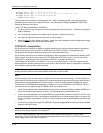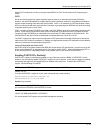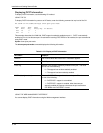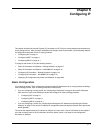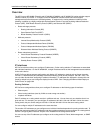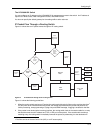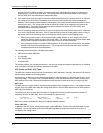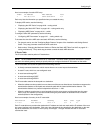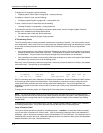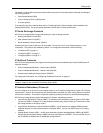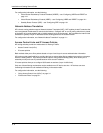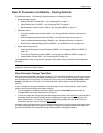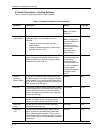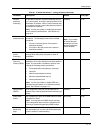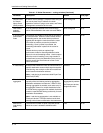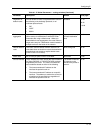
Installation and Getting Started Guide
To display the IP route table, see the following:
• “Displaying the IP Route Table” on page 6-90 – routing switch only
To configure a static IP route, see the following:
• “Configuring Static Routes” on page 6-36 – routing switch only
To clear a route from the IP route table, see the following:
• “Clearing IP Routes” on page 6-93 – routing switch only
To increase the size of the IP route table for learned and static routes, see the “Configuring Basic Features”
chapter of the Installation and Getting Started Guide:
• For learned routes, modify the ip-route parameter.
• For static routes, modify the ip-static-route parameter.
IP Forwarding Cache
The IP forwarding cache provides a fast-path mechanism for forwarding IP packets. The cache contains entries
for IP destinations. When an HP ProCurve routing switch has completed processing and addressing for a packet
and is ready to forward the packet, the device checks the IP forwarding cache for an entry to the packet’s
destination.
• If the cache contains an entry with the destination IP address, the device uses the information in the entry to
forward the packet out the ports listed in the entry. The destination IP address is the address of the packet’s
final destination. The port numbers are the ports through which the destination can be reached.
• If the cache does not contain an entry and the traffic does not qualify for an entry in the session table instead,
the software can create an entry in the forwarding cache.
Each entry in the IP forwarding cache has an age timer. If the entry remains unused for ten minutes, the software
removes the entry. The age timer is not configurable.
NOTE: The HP 6208M-SX does not have an IP forwarding cache.
Here is an example of an entry in the IP forwarding cache:
IP Address Next Hop MAC Type Port Vlan Pri
1 192.168.1.11 DIRECT 0000.0000.0000 PU n/a 0
Each IP forwarding cache entry contains the IP address of the destination, and the IP address and MAC address
of the next-hop router interface to the destination. If the destination is actually an interface configured on the
routing switch itself, as shown here, then next-hop information indicates this. The port through which the
destination is reached is also listed, as well as the VLAN and Layer 4 QoS priority associated with the destination
if applicable.
To display the IP forwarding cache, see “Displaying the Forwarding Cache” on page 6-88.
NOTE: You cannot add static entries to the IP forwarding cache, although chassis routing switches do have
options to optimize the cache and increase the number of entries the cache can contain. See “Optimizing the IP
Forwarding Cache” on page 6-60 and the “Configuring Basic Features” chapter of the Installation and Getting
Started Guide.
To increase the size of the IP forwarding cache, see the “Configuring Basic Features” chapter of the Installation
and Getting Started Guide. The ip-cache parameter controls the size of the IP forwarding cache.
Layer 4 Session Table
The Layer 4 session provides a fast path for forwarding packets. A session is an entry that contains complete
Layer 3 and Layer 4 information for a flow of traffic. Layer 3 information includes the source and destination IP
addresses. Layer 4 information includes the source and destination TCP and UDP ports. For comparison, the IP
forwarding cache contains the Layer 3 destination address but does not contain the other source and destination
address information of a Layer 4 session table entry.
6 - 6



